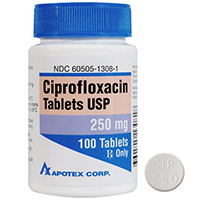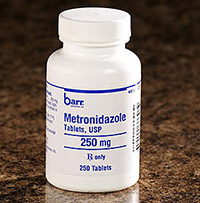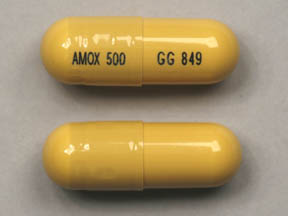What you should know most about antibiotics
Never expect a doctor to phone in an antibiotic prescription without first seeing you. Why? To ensure your disease is a bacterial infection, since viruses do not respond to antibiotics.
Influenza, for example, is a virus infection – that’s why your doctor will never prescribe antibiotics for this.
Knowing the difference between a bacterial and a viral disease can save both time and money. Here are four tips for helping you determine when a disease could be bacterial or viral. Just take this advice when you are unable to see a doctor (when SHTF does):
- Location: A viral disease typically causes symptoms which are widespread. Bacteria usually causes symptoms that are unique to the location, such as those affecting the sinuses, mouth, or chest.
- Phlegm color: If any, a virus may produce clear mucous or fuzzy mucous. A bacterial disease generates typically colored phlegm (green, yellow, bloody, or brown-tinged).
- Duration of illness: The majority of viral diseases last from 2 to 10 days. Commonly, a bacterial outbreak will last longer than 10 days.
- Fever: A viral infection can cause fever, or not. A bacterial illness causes fever notoriously (normal body temperature is 98.6 F, a fever is considered to exceed 100 degrees Fahrenheit).
Typical antibiotic treatment is 10 to 14 days, if you are diagnosed with a bacterial illness.
Once on an antibiotic a person is no longer considered contagious for 24 hours and any fever has been resolved.
If your symptoms fail to resolve, or if you develop severe headache or neck pain, persistent nausea/vomiting or fever at any time, be sure to see a doctor promptly.
What Antibiotics To Stockpile
No antibiotics are effective against all kinds of microbes. Some will destroy aerobic bacteria, some will be used for anaerobic bacteria, others will be used against resistant strains and some people will be allergic to various antibiotics or intolerant to these.
Instead of buying 10 types of antibiotics (many of which have similar substances) you can find 4-5 with completely different behavior, because if one of them is immune to the bacteria, you have 4 completely different “solutions” to seek.
Of course, this only occurs if you don’t have access to a clinic where they can first test the bacterial resistance to these antibiotics.
For example, if you have taken Amoxicillin without effect, there is no need to try other antibiotics based on penicillin (carbenicillin, cloxacillin, flucloxacillin, oxacillin, methicillin etc.) so you can exclude a wide range of antibiotics.
But the antibiotics mentioned below should work for most bacterial diseases, including most dangerous biological weapons (like Anthrax – 90% mortality without treatment in the first 3-6 days).
Related: Fish Antibiotics for Survival and How to Store Them
The 4 Antibiotics You’ll Need
1. Amoxicillin
Amoxicillin is a penicillin antibiotic used to treat many types of bacterial infections, such as tonsillitis, bronchitis, pneumonia, gonorrhea, and ear, nose, or throat infections.
Amoxicillin is also sometimes used to treat stomach ulcers caused by Helicobacter pylori infection along with another antibiotic called clarithromycin – the second one.
2. Clarithromycin


Clarithromycin is an antibiotic to the macrolide. It battles bacteria inside your body.
Clarithromycin is used to treat the skin and respiratory system of many different types of bacterial infections. If the bacteria appear to be resistant to Amoxicillin, then this is the next best thing to try when SHTF is on.
Contains and may be replaced with erythromycin. Don’t take both of these antibiotics at once.
3. Ciprofloxacin


Ciprofloxacin is an antibiotic in a group of drugs named fluoroquinolones.
Ciprofloxacin is useful for infections for anthrax, urinary tract and prostate, diverticulitis, and many forms of pneumonia and bronchitis.
Related: What You Should Know Before Stockpiling Antibiotics
4. Metronidazole


Metronidazole is part to a class of antibiotics known as nitroimidazoles.
Metronidazole is used for the treatment of parasitic and bacterial infections including Giardia infections of the small intestine, colon infections, liver abscess, vaginal infections (not yeast), fungal wounds, intra-abdominal infections, lung abscess, and gingivitis.
How to store antibiotics?
Each antibiotic has its own particular rate of decay, as the proteins (oligopeptides) are subject to hydrolysis, the main form of attack (heat and moisture are the enemy).
So, if you’re planning on long-term storage, the best choice is the individual foil packs. Then pack them with desiccants in sealed containers, just to be sure.
For how long is it still safe to take antibiotics after the expiration date?
The American Medical Association (AMA) conducted a study and concluded that some products’ actual shelf-life is longer than the labeled expiry date.
Manufacturers put expiration dates on for marketing, rather than scientific, reasons,” said Mr. Flaherty, a formal pharmacist at the FDA. “It’s not profitable for them to have products on a shelf for 10 years. They want turnover.”
With time, most antibiotics just get less effective.
So perhaps the question should be “how long will these antibiotics still have effects?
Amoxicillin (tablets) – 5 years after the expiration date;
Clarithromycin and Doxycycline (tablets) – 5 years after the expiration date;
Ciprofloxacin (tablets) – 10 years after the expiration date;
Metronidazole (tablets) – 3 years after expiration date.
I hope you found this information useful!






















